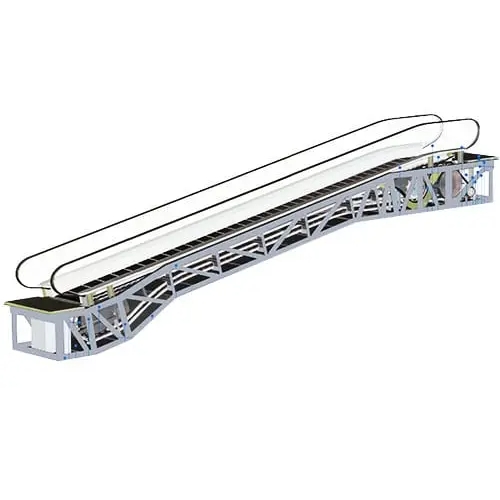What Is The Difference Between a Moving Walkway And An Escalator?
A moving walkway, also known as a travelator, is a flat conveyor belt that moves people horizontally or along a slight incline. It is typically used in airports, train stations, and other public spaces to help people cover large distances more quickly.
An escalator, on the other hand, is a moving staircase that transports people between different levels of a building. It is often used in shopping malls, metro stations, and other public buildings to facilitate vertical movement.
In summary, the main difference between a moving walkway and an escalator is the direction of movement: a moving walkway moves people horizontally or along a slight incline, while an escalator moves people vertically between different levels.

Why Is Moving Walkway Important?
Moving walkways are important for several reasons:
1. Efficiency: Moving walkways help people cover large distances more quickly, especially in places like airports and train stations. This can improve overall efficiency and reduce congestion in busy areas.
2. Accessibility: Moving walkways can make it easier for people with mobility issues, elderly individuals, and parents with young children to navigate through large public spaces.
3. Convenience: They provide a convenient way for people to move from one point to another without having to walk the entire distance, which can be especially helpful for those carrying heavy luggage or bags.
4. Energy savings: In some cases, moving walkways can help reduce the energy consumption associated with traditional transportation methods, such as shuttle buses or trams, by providing a more efficient means of moving people within a facility.
Overall, moving walkways play an important role in improving the flow of people in public spaces, enhancing accessibility, and providing a convenient and efficient means of transportation.
Who Invented Moving Walkway
The moving walkway, also known as a moving sidewalk or travelator, was invented by Albert Speer, a German architect and urban planner, in 1928. Speer designed the first moving walkway for the 1928 International Building Exhibition in Berlin. His invention was a significant advancement in transportation technology and has since become a common feature in airports, train stations, and other public spaces around the world.
Albert Speer, the German architect and urban planner, is credited with inventing the moving walkway in 1928. Speer's design was a significant innovation in transportation technology, and it was first showcased at the 1928 International Building Exhibition in Berlin. His invention was a flat conveyor belt that moved people horizontally or along a slight incline, providing a more efficient means of transportation within public spaces. Speer's work in urban planning and architecture contributed to the development of various infrastructure and transportation solutions, including the moving walkway, which has since become a common feature in modern public facilities.
What Are The Different Types Of Moving Walkways?
There are several different types of moving walkways, each designed to serve specific purposes and accommodate different environments. Some common types include:
1. Horizontal moving walkways: These are the most common type and are used to transport people horizontally across large distances, such as in airports and exhibition centers.
2. Inclined moving walkways: These are designed to transport people up or down inclines, such as in subway stations or hilly areas.
3. Pallet-type moving walkways: These moving walkways use a series of pallets or platforms to transport people, and they are often used in industrial or manufacturing settings.
4. Outdoor moving walkways: Some moving walkways are designed for outdoor use, such as in parks or recreational areas, to help people traverse long distances more easily.
These different types of moving walkways are designed to provide efficient and convenient transportation options for people in various settings and environments.
Post time: Jul-15-2024
